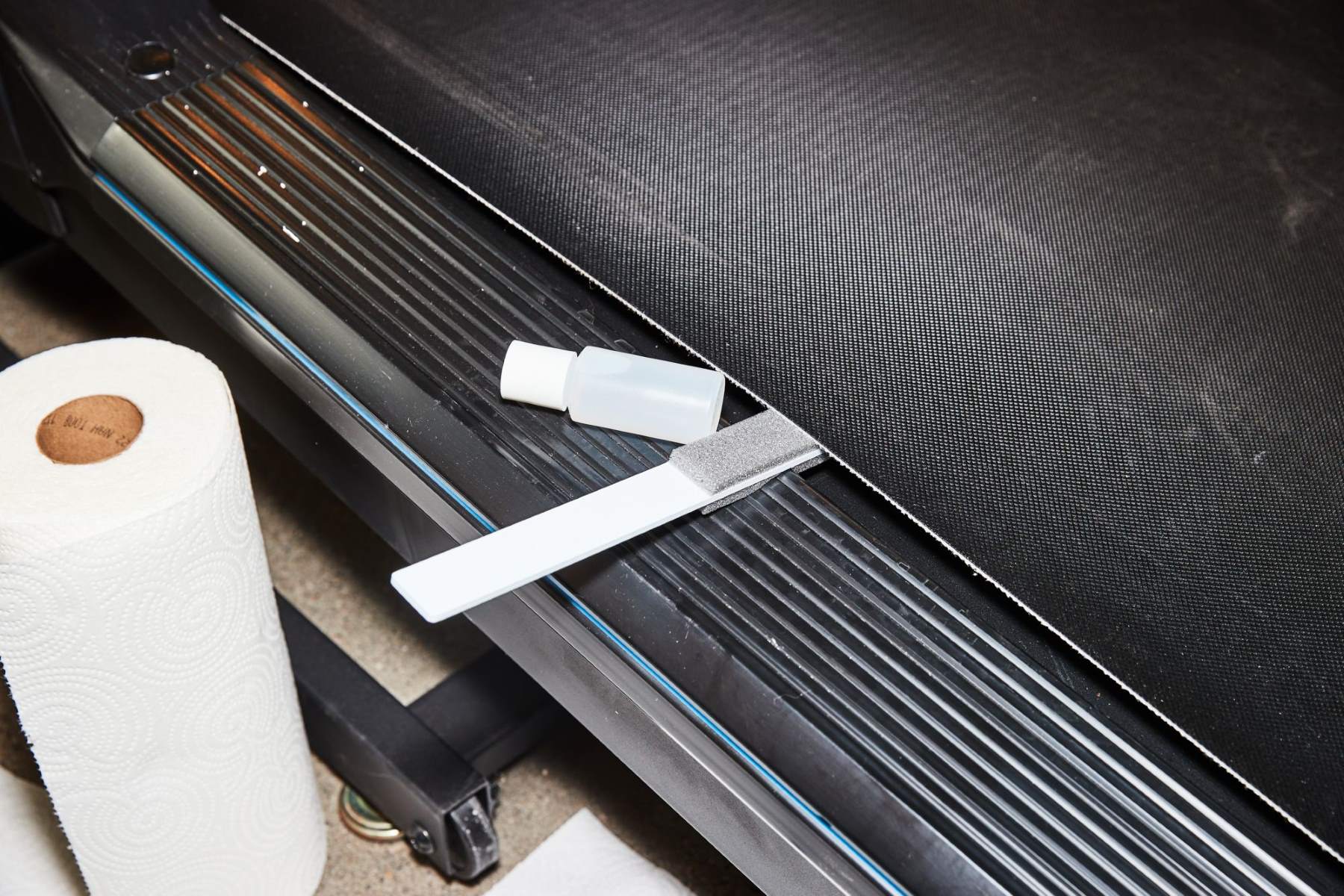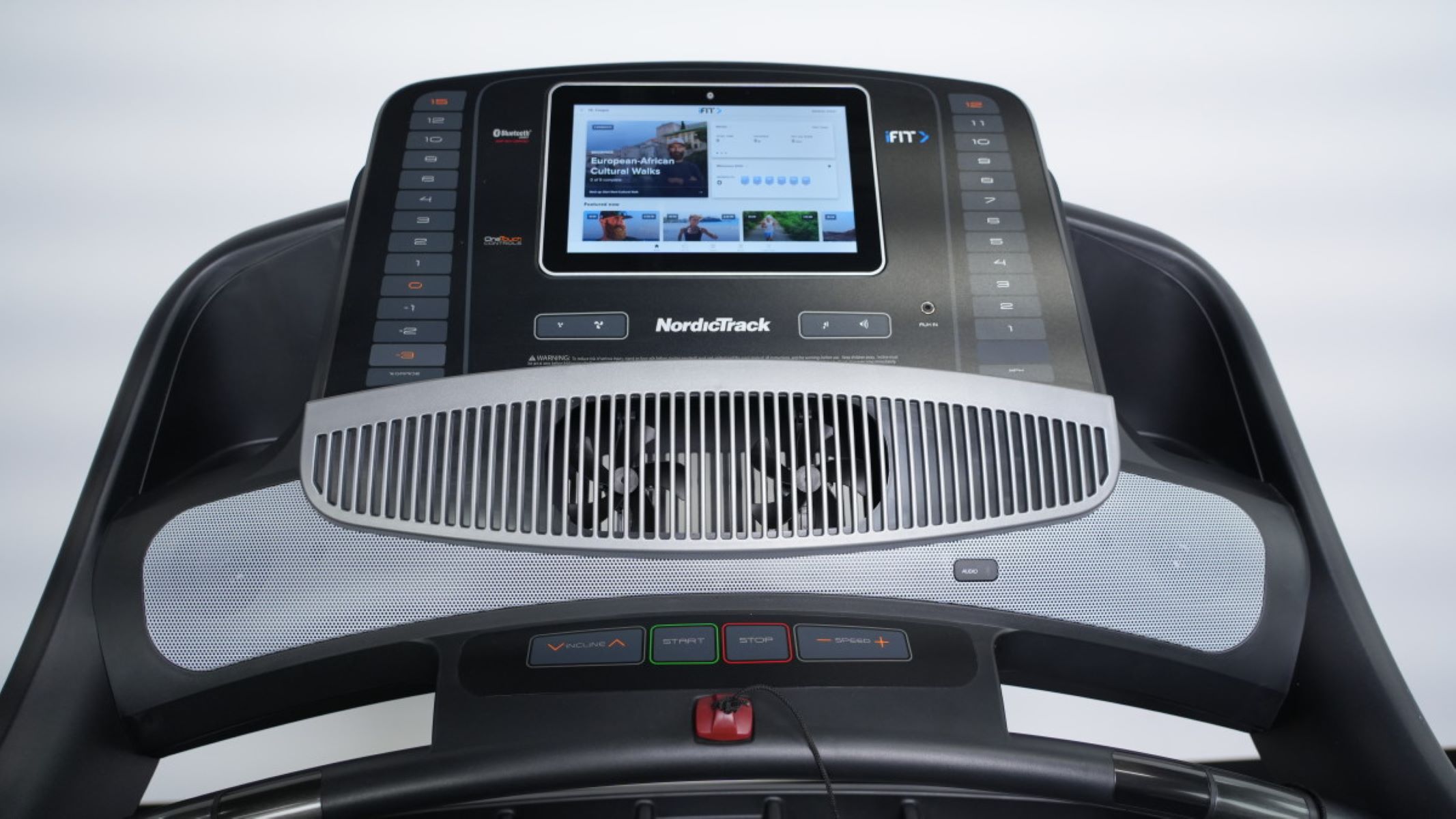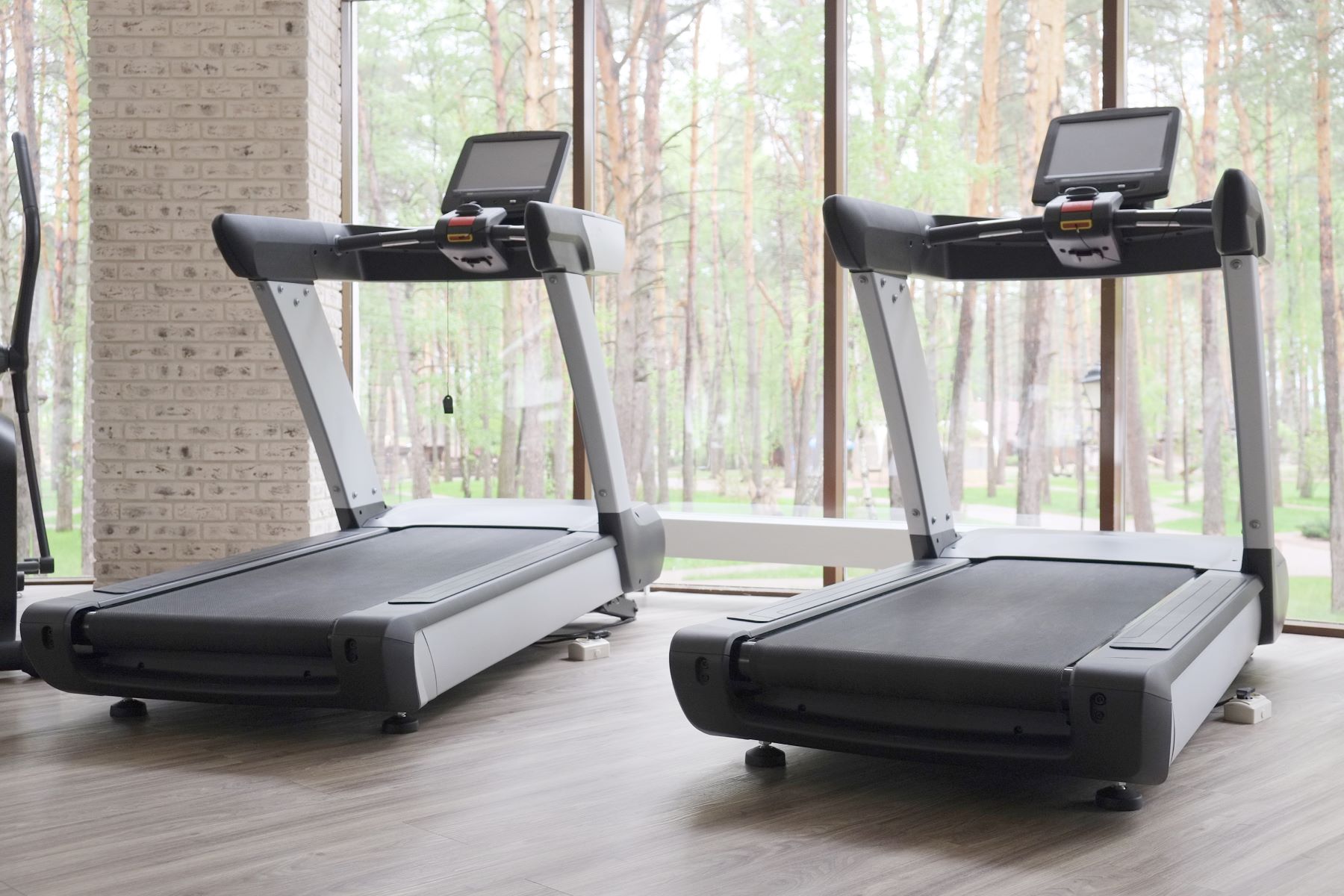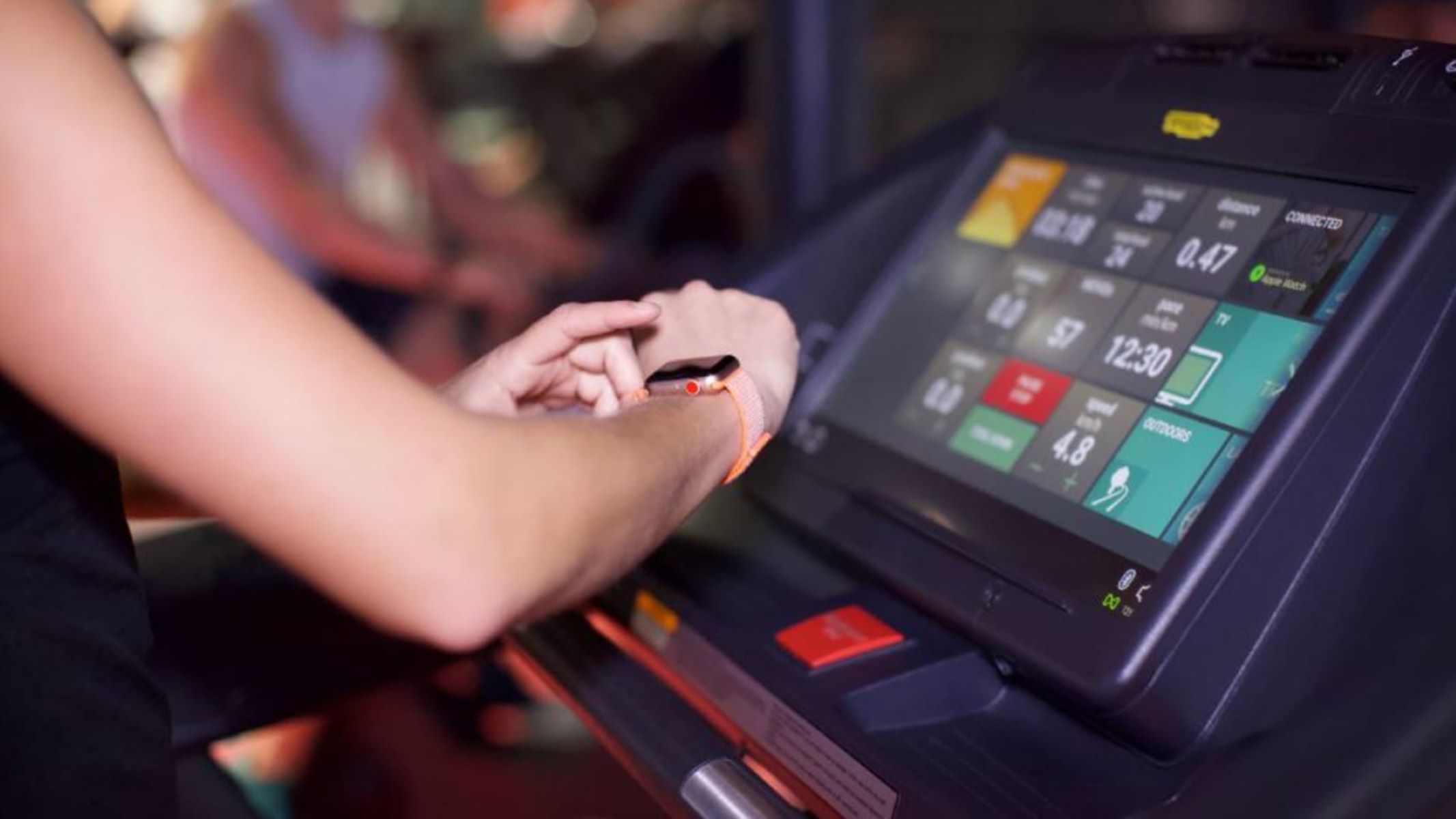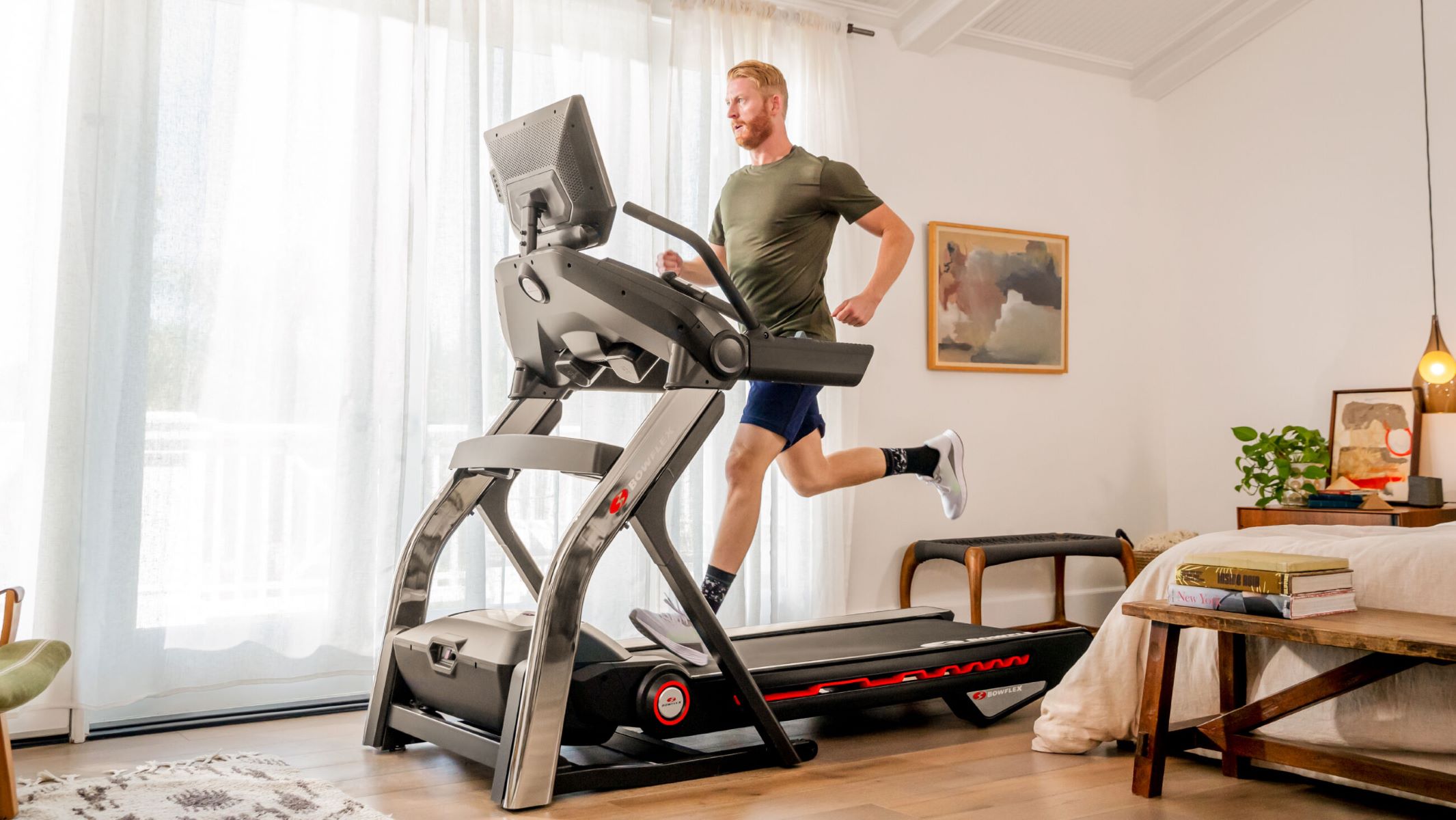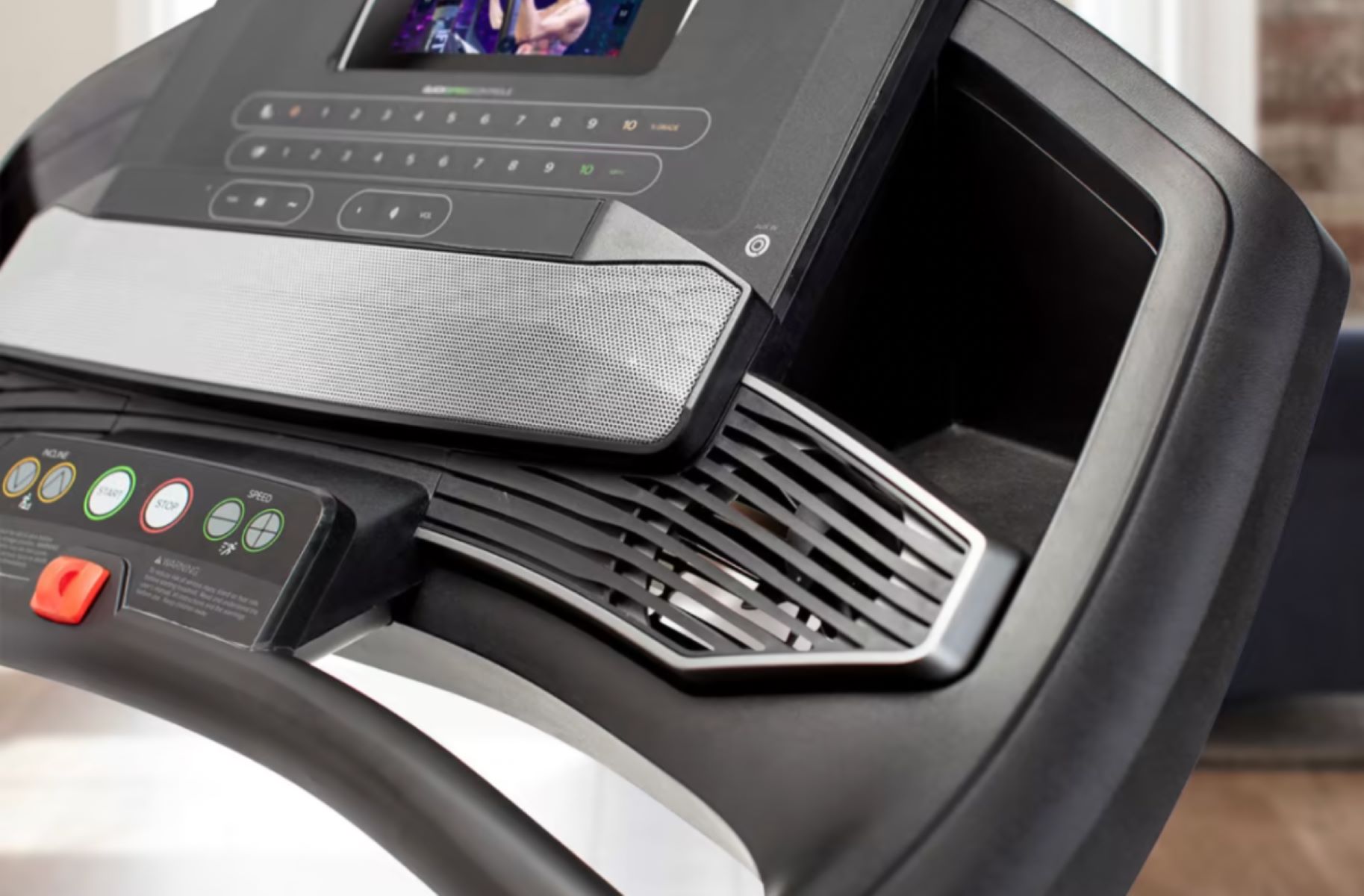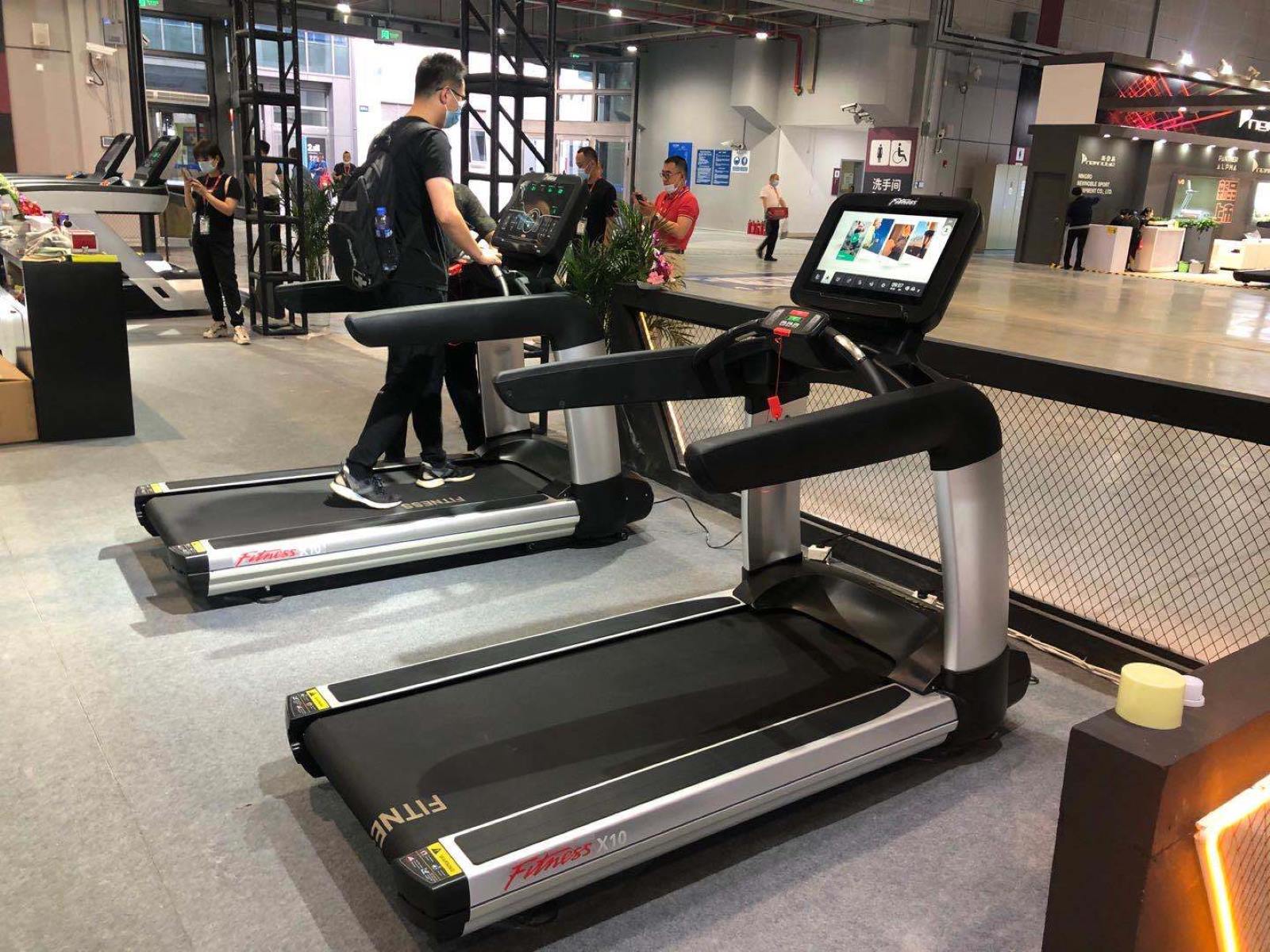Home>Misc>Featured>Why Does My Treadmill Belt Stop When I Step On It?
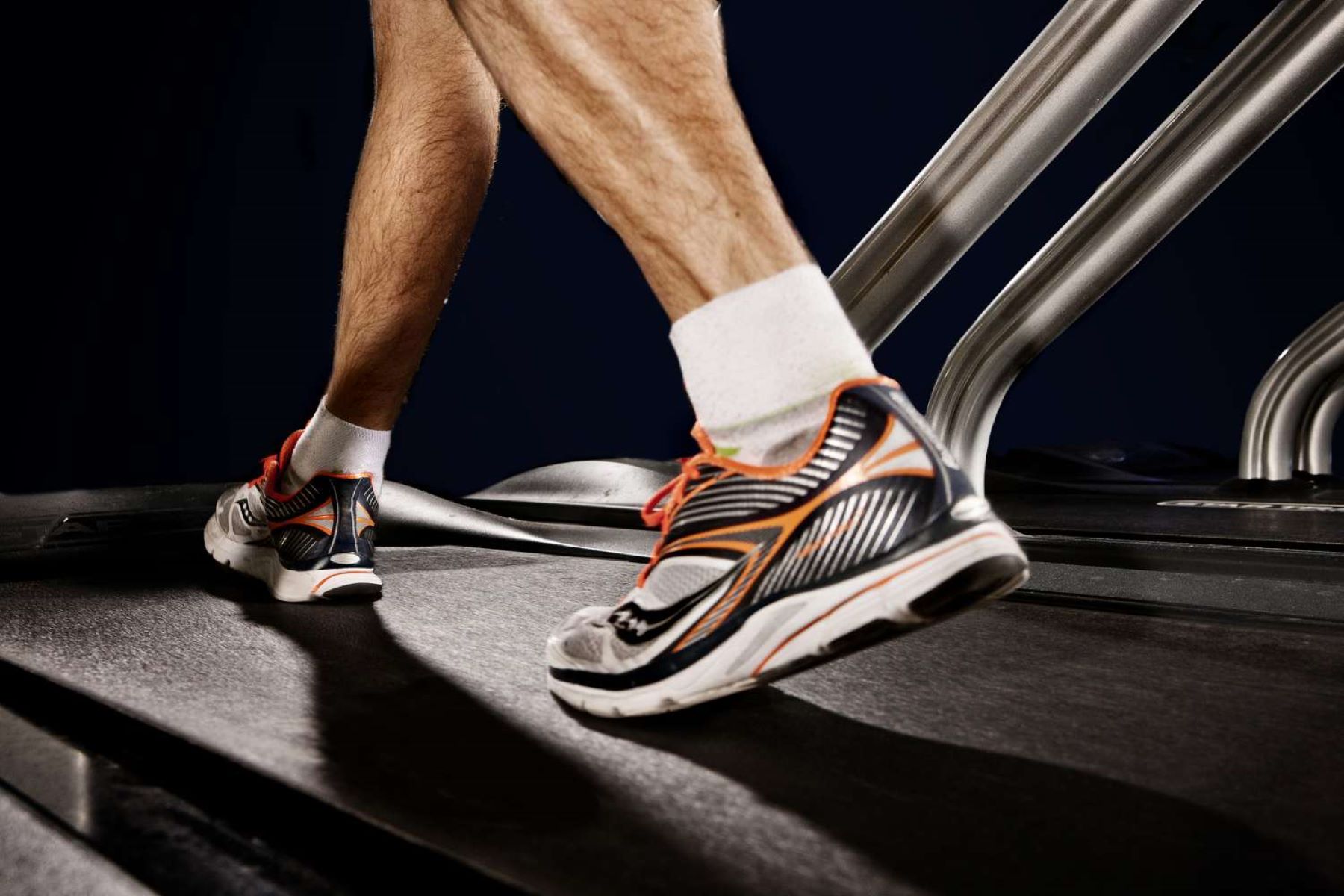

Featured
Why Does My Treadmill Belt Stop When I Step On It?
Modified: October 25, 2023
Get your fitness on with our featured treadmill! Say goodbye to belt stoppage when you step on it. Enjoy uninterrupted workouts today!
Introduction
Are you frustrated with your treadmill belt stopping whenever you step on it? Don’t worry, you’re not alone. Many treadmill owners experience this issue, and it can be quite frustrating when you’re in the middle of a workout. Understanding the possible causes of this problem and how to troubleshoot it can help you get your treadmill running smoothly again.
There are several factors that could contribute to your treadmill belt stopping when you step on it. It could be due to insufficient lubrication, a loose belt, a worn motor or motor belt, incorrect tension, or even obstructed rollers. By identifying the root cause and taking the necessary steps to address it, you can prevent further disruptions during your workouts.
In this article, we will explore the possible causes of your treadmill belt stopping when you step on it and provide you with troubleshooting steps to fix the issue. By following these steps, you can enjoy a smooth and uninterrupted workout experience on your treadmill.
Possible Causes
When your treadmill belt stops when you step on it, it can be attributed to a variety of causes. Understanding these potential issues can help you diagnose and resolve the problem effectively. Here are the most common causes:
- Insufficient Lubrication: One of the primary causes of a treadmill belt stopping is insufficient lubrication. Over time, the belt can become dry and friction between the belt and the deck can increase, causing it to slow down or stop altogether.
- Loose Belt: If the treadmill belt is loose, it may slip or stop when stepped on. This can be caused by loose adjustment bolts or inadequate belt tension.
- Worn Motor or Motor Belt: A worn-out motor or motor belt can also cause the treadmill belt to stop. If the motor is unable to generate enough power or if the motor belt is damaged, it may not be able to maintain consistent movement.
- Incorrect Tension: Proper tension is essential for a smooth and functional treadmill belt. If the belt tension is too tight or too loose, it can cause the belt to stop when weight is applied.
- Obstructed Rollers: Another possible cause of the belt stopping is if there are any obstructions or debris in the rollers. This can disrupt the smooth movement of the belt and cause it to come to a halt.
By understanding these possible causes, you can begin to troubleshoot and pinpoint the specific issue that may be affecting your treadmill. In the next sections, we will explore the troubleshooting steps to address each of these potential causes, ensuring that your treadmill belt runs smoothly for your workouts.
Insufficient Lubrication
Insufficient lubrication is a common culprit when it comes to a treadmill belt stopping when you step on it. Over time, the lubricant on your treadmill belt can wear off, causing increased friction between the belt and the deck. This friction can make it difficult for the belt to move smoothly, leading to the belt stopping or slowing down.
To address this issue, you will need to lubricate your treadmill belt. Follow these steps:
- Check the manufacturer’s recommendations: Consult your treadmill’s user manual or contact the manufacturer to determine the type of lubricant recommended for your specific treadmill model.
- Clean the belt: Before applying lubricant, make sure to clean the belt and remove any debris or dust that may have accumulated. This helps ensure that the lubricant adheres properly to the belt surface.
- Apply the lubricant: Using the recommended lubricant, apply a thin, even layer to the underside of the treadmill belt. Be sure to follow the manufacturer’s instructions regarding the amount of lubricant to use.
- Spread the lubricant: Once the lubricant is applied, turn on the treadmill and let it run at a slow speed for a few minutes to allow the lubricant to spread evenly across the belt. This will help ensure smooth movement during your workout.
By regularly lubricating your treadmill belt, you can reduce friction and prevent it from stopping when pressure is applied. It’s important to note that the frequency of lubrication may vary depending on your usage. Refer to your treadmill’s user manual for specific guidelines on how often to lubricate the belt.
Remember, proper lubrication is just one potential solution for a treadmill belt that stops when you step on it. If lubrication does not resolve the issue, continue to the next troubleshooting step to identify and address any other possible causes.
Loose Belt
A loose treadmill belt can cause it to slip or stop when you step on it. This can be a frustrating issue, but fortunately, it can often be resolved by adjusting the belt tension. Here’s how you can fix a loose treadmill belt:
- Power off the treadmill: Before making any adjustments, ensure that the treadmill is turned off and unplugged for safety.
- Locate the adjustment bolts: Most treadmills have two adjustment bolts at the rear end of the machine. These bolts can be found on either side of the rear roller. Consult your treadmill’s user manual to find the exact location.
- Tighten the bolts: Use a wrench or an Allen wrench (depending on the type of bolts) to tighten both adjustment bolts evenly. Turn them clockwise in small increments, alternating between the bolts, until the belt feels firm and secure.
- Check the belt tension: After tightening the adjustment bolts, it’s important to check the belt tension. Do this by pressing down firmly in the center of the belt with your foot. The belt should have a slight give (approximately 2-3 inches) but not be too loose or too tight.
- Retest the treadmill: Once you’ve adjusted the belt tension, power on the treadmill and test it by walking or running on the belt. The belt should now remain in motion without slipping or stopping when you step on it.
If tightening the adjustment bolts does not resolve the issue, it’s possible that the belt may need to be replaced. Additionally, some treadmills may have a tension adjustment knob located near the front or underside of the machine, which can be used to tighten or loosen the belt. Refer to your treadmill’s user manual for specific instructions on adjusting the belt tension.
By properly adjusting the belt tension, you can ensure that your treadmill belt remains tight and secure, allowing for a smooth and uninterrupted workout session.
Worn Motor or Motor Belt
A worn-out motor or motor belt can also be a possible cause of your treadmill belt stopping when you step on it. If the motor is unable to generate enough power or if the motor belt is damaged, it can affect the movement of the treadmill belt. Here’s what you can do to address this issue:
- Power off the treadmill: Ensure that the treadmill is turned off and unplugged before proceeding with any troubleshooting steps.
- Inspect the motor belt: Remove the motor cover and visually inspect the motor belt. Look for any signs of wear, fraying, or damage. If you notice any issues with the motor belt, it may need to be replaced. Refer to your treadmill’s user manual or contact the manufacturer for guidance on replacing the motor belt.
- Check the motor: In some cases, a faulty motor may be causing the belt to stop. If you suspect that the motor is the issue, it’s best to seek professional assistance. Contact the manufacturer or a qualified technician to inspect and repair the motor if needed.
Keep in mind that replacing a motor belt or repairing a motor should be done by a trained professional unless you have experience and knowledge in this area. Working with electrical components can be dangerous, and it’s important to prioritize your safety.
In some cases, troubleshooting motor-related issues may require specialized tools and expertise. If the above steps do not resolve the problem, it’s recommended to contact the treadmill manufacturer or a professional technician for further assistance.
Remember, a worn motor or motor belt may not be the only cause of your treadmill belt stopping when you step on it. Continue to the next troubleshooting step to explore other potential causes and solutions.
Incorrect Tension
Improper tension of the treadmill belt can cause it to halt when you step on it. If the belt tension is too tight or too loose, it can affect the smooth movement of the belt. Here’s how you can check and adjust the tension to ensure proper functionality:
- Power off the treadmill: Before making any adjustments, make sure the treadmill is turned off and unplugged for safety.
- Locate the tension adjustment: Depending on the model of your treadmill, the tension adjustment mechanism may vary. It could be located at the back or front of the machine, near the motor or on the sides. Consult your treadmill’s user manual for specific instructions on locating the tension adjustment.
- Loosen the tension: If the belt is too tight, use the tension adjustment mechanism to loosen it. Turn the adjustment mechanism counterclockwise in small increments until the belt has a slight give when pressed with your foot in the center.
- Tighten the tension: If the belt is too loose, use the tension adjustment mechanism to tighten it. Turn the adjustment mechanism clockwise in small increments until the belt is firm and has minimal movement when pressed with your foot in the center.
- Test the tension: Once you’ve made the adjustments, power on the treadmill and test the belt by walking or running on it. The belt should now move smoothly without stopping or slipping when you step on it.
It’s important to find the right balance for the tension of your treadmill belt. Keep in mind that excessive tension can cause stress on the motor and other components, while insufficient tension can result in slippage or stopping of the belt when weight is applied.
If you’re unsure about adjusting the tension yourself, consult your treadmill’s user manual or contact the manufacturer for assistance. In some cases, a professional technician may be needed to ensure proper tension adjustment.
Incorrect belt tension is just one possible cause of your treadmill belt stopping when you step on it. Continue to the next troubleshooting step to explore other potential causes and solutions.
Obstructed Rollers
The presence of obstructions in the rollers can also cause your treadmill belt to stop when you step on it. If there is debris or an object lodged in the rollers, it can disrupt the smooth movement of the belt. Here’s how you can address this issue:
- Power off the treadmill: Prior to any troubleshooting steps, ensure that the treadmill is turned off and unplugged for safety.
- Clear the area around the rollers: Carefully inspect the rollers and surrounding areas for any debris, such as dust, dirt, or small objects. Use a soft cloth or brush to gently remove any obstructions that may be present.
- Inspect the rollers for damage: While you’re cleaning the area around the rollers, check them for any signs of damage, such as cracks or misalignment. If you notice any issues with the rollers, it’s advisable to contact the manufacturer for further guidance or professional assistance.
- Test the treadmill: After clearing any obstructions from the rollers, power on the treadmill and test the belt by walking or running on it. The belt should now move smoothly without any interruptions or stops caused by obstructions in the rollers.
Regularly cleaning the area around the rollers and ensuring their proper functioning can help prevent obstructions from causing your treadmill belt to stop. You can incorporate this into your regular maintenance routine to keep your treadmill in optimal condition and prevent future issues.
If clearing the rollers of debris does not resolve the problem, it’s recommended to continue to the next troubleshooting step to explore other potential causes and solutions.
Troubleshooting Steps
Experiencing a treadmill belt that stops when you step on it can be frustrating, but there are several troubleshooting steps you can take to diagnose and resolve the issue. Follow these steps to get your treadmill running smoothly again:
- Inspect for obstructions: Check for any debris, dust, or objects that may be obstructing the belt or rollers. Clear any obstructions carefully to ensure smooth movement.
- Adjust the belt tension: Ensure that the treadmill belt is properly tensioned. Use the designated adjustment mechanism to tighten or loosen the belt as necessary.
- Check for loose parts: Examine the treadmill for any loose bolts, screws, or other parts. Tighten any loose components to ensure stability and smooth operation.
- Lubricate the belt: If the belt appears dry or lacks lubrication, apply the recommended lubricant according to the manufacturer’s instructions. This will help reduce friction and allow for smoother movement.
- Inspect the motor and motor belt: Check the motor and motor belt for any signs of wear or damage. If necessary, consult the user manual or a professional technician for repair or replacement.
- Verify proper power supply: Ensure that the treadmill is properly plugged into a functioning power outlet and that the power cord is intact. Test the outlet with another device to confirm that there is power.
- Reset the treadmill: Some treadmills have a reset button or procedure. Consult your treadmill’s user manual to find out how to perform a reset and follow the instructions.
- Contact customer support or a technician: If the issue persists and none of the troubleshooting steps resolve it, reaching out to the treadmill’s customer support or hiring a professional technician may be necessary.
By following these troubleshooting steps, you can identify and resolve the issue causing your treadmill belt to stop when you step on it. However, it’s important to keep in mind that each treadmill model may have specific troubleshooting procedures. Refer to your treadmill’s user manual or contact the manufacturer for detailed guidance on resolving the problem.
Lubricating the Belt
Lubricating the treadmill belt is an essential maintenance task that helps ensure smooth and uninterrupted operation. Insufficient lubrication can cause the belt to stop when pressure is applied. Here’s how you can properly lubricate your treadmill belt:
- Refer to the manufacturer’s recommendations: Consult your treadmill’s user manual or contact the manufacturer to determine the type of lubricant recommended for your specific treadmill model. Different treadmill models may require different types of lubricants.
- Clean the belt: Before applying the lubricant, make sure to clean the belt thoroughly. Remove any dust, debris, or particles that may have accumulated. Use a soft cloth or brush to gently clean the surface of the belt.
- Apply the lubricant: Using the recommended lubricant, apply a thin, even layer to the underside of the treadmill belt. Focus on the center of the belt, as this is where most friction occurs during use. Avoid applying the lubricant on the top surface of the belt.
- Spread the lubricant: After applying the lubricant, turn on the treadmill and let it run at a slow speed for a few minutes. This will allow the lubricant to spread evenly across the belt surface, ensuring smooth movement during your workouts.
- Wipe off excess lubricant: After the lubricant has had a chance to spread, use a clean cloth to wipe off any excess lubricant from the belt. Excess lubricant can attract more dirt and debris, creating a sticky and dirty surface.
The frequency of lubrication may vary depending on the frequency of use. Refer to your treadmill’s user manual for specific guidelines on how often to lubricate the belt. It’s important to note that over-lubrication can be just as problematic as insufficient lubrication, so be mindful of the amount applied.
By regularly lubricating your treadmill belt, you can reduce friction, ensure smooth operation, and prevent the belt from stopping when weight is applied. Incorporate lubrication into your treadmill maintenance routine to keep your machine in optimal condition.
Adjusting the Belt Tension
Proper belt tension is crucial for the smooth functioning of your treadmill and to prevent the belt from stopping when pressure is applied. If the belt tension is too loose or too tight, it can affect the performance and overall experience of your workouts. Here’s how you can adjust the belt tension:
- Power off the treadmill: Before making any adjustments, ensure that the treadmill is turned off and unplugged for safety.
- Locate the tension adjustment bolts or mechanism: Depending on the treadmill model, the tension adjustment bolts or mechanism can be found at the rear end or on both sides of the machine. Consult your treadmill’s user manual to locate the specific tension adjustment points.
- Tightening the belt: If the belt is too loose, turn the tension adjustment bolts clockwise in small increments. Start with a quarter turn on each bolt and then test the belt tension by walking or jogging on the machine. Repeat this process until the belt tension is at the desired level.
- Loosening the belt: If the belt is too tight, turn the tension adjustment bolts counterclockwise in small increments. Again, start with a quarter turn on each bolt and test the belt tension. Continue adjusting until the belt tension feels appropriate.
- Ensuring equal tension: As you make adjustments, remember to tighten or loosen the bolts equally on both sides to maintain balanced tension across the belt.
- Testing the belt tension: After making the necessary adjustments, power on the treadmill and test the belt by walking or running on it. The belt should now move smoothly without stopping or slipping when pressure is applied.
It’s important to find the right balance in belt tension—too loose can cause slipping, while too tight can put unnecessary strain on the motor and other components. The ideal tension allows the belt to have a slight give when pressed down with your foot.
If you’re unsure about adjusting the tension yourself, it’s recommended to consult your treadmill’s user manual or contact the manufacturer for guidance. They can provide specific instructions based on your treadmill model.
By properly adjusting the belt tension, you can ensure a smooth and comfortable workout experience while reducing the risk of the belt stopping when you step on it.
Checking for Loose Parts
If your treadmill belt stops when you step on it, it’s important to check for any loose parts that may be contributing to the issue. Loose bolts, screws, or other components can affect the stability and smooth functioning of the treadmill. Here’s how you can check for and address loose parts:
- Power off the treadmill: Before conducting any inspection or adjustment, ensure that the treadmill is turned off and unplugged.
- Inspect the treadmill: Carefully examine the different parts of the treadmill, including the frame, handles, console, and base. Look for any loose bolts, screws, or other visible signs of looseness.
- Tighten loose parts: Using the appropriate tools (such as a wrench or screwdriver), tighten any loose bolts or screws that you find during the inspection. Start with the ones that are visibly loose or feel unstable.
- Perform a test: After tightening the loose parts, power on the treadmill and perform a test run by walking or running on the belt. Pay attention to any vibrations or sounds that may indicate additional loose parts or areas that require further adjustment.
It’s crucial to ensure that all parts of the treadmill are securely fastened. Loose parts can not only contribute to the belt stopping but can also pose safety risks. Regularly checking for and addressing loose parts as part of your treadmill maintenance routine can help prevent such issues.
If you’re uncertain about tightening or accessing certain parts of your treadmill, refer to the user manual provided by the manufacturer or contact their customer support for guidance. They can provide specific instructions and advice tailored to your treadmill model.
Remember, loose parts may not be the sole reason for the belt stopping when you step on it. Continue to the next troubleshooting steps to explore other potential causes and solutions.
Clearing any Obstructions
If your treadmill belt stops when you step on it, there may be obstructions or debris causing the issue. Objects or dirt lodged in the belt or rollers can disrupt the smooth movement of the treadmill. Follow these steps to clear any obstructions:
- Power off the treadmill: Before performing any troubleshooting, make sure the treadmill is turned off and unplugged for safety.
- Inspect the belt and rollers: Carefully examine the treadmill belt and rollers for any visible signs of obstruction or debris. Look for objects that may have fallen or accumulated over time.
- Remove larger debris: Use your hands or a pair of tweezers to carefully remove any visible larger debris, such as paper, clothing, or small objects.
- Clean the belt and rollers: Use a clean cloth or brush to wipe the belt and rollers, removing any dirt, dust, or smaller particles that may be causing the obstruction. Pay close attention to the edges and corners of the belt and rollers.
- Test the treadmill: After removing the obstructions and cleaning the belt and rollers, power on the treadmill and test the belt by walking or running on it. The belt should now move smoothly without any interruptions or stops caused by obstructions.
Regularly checking and clearing any obstructions from your treadmill is important for maintaining its performance and prolonging its lifespan. It is recommended to clean the belt and rollers periodically to prevent the accumulation of dirt and debris that can lead to further issues.
If you continue to experience issues or if the obstruction is difficult to remove, consult your treadmill’s user manual or contact the manufacturer for further guidance. They may provide specific instructions or advise you to seek professional assistance.
Clearing any obstructions is an essential step in troubleshooting a treadmill belt that stops when you step on it. Continue to the next troubleshooting steps to explore other potential causes and solutions.
Checking the Motor and Motor Belt
When your treadmill belt stops when you step on it, it is important to check the motor and motor belt as these components play a crucial role in powering the treadmill. Here’s how you can check and address issues with the motor and motor belt:
- Power off the treadmill: Before conducting any inspection or adjustment, ensure that the treadmill is turned off and unplugged to avoid any risk of electrical shock.
- Locate the motor and motor belt: The motor and motor belt are usually positioned near the front or bottom of the treadmill. Refer to your treadmill’s user manual to find the exact location of these components.
- Inspect the motor belt: Examine the motor belt for any signs of wear, fraying, or damage. A worn-out or damaged motor belt may not adequately transfer power from the motor to the treadmill belt, causing it to stop or slow down. If you notice any issues with the motor belt, it should be replaced.
- Check the motor: Inspect the motor for any visible signs of damage, such as burning smells, loose wires, or unusual noises. If you observe any issues with the motor, it is recommended to seek professional assistance or contact the manufacturer for further guidance on repair or replacement.
- Tighten the motor belt: If the motor belt appears to be loose, you may need to adjust the tension. Refer to your treadmill’s user manual or follow the instructions provided by the manufacturer to correctly adjust the tension of the motor belt.
- Test the treadmill: After inspecting and making any necessary adjustments, power on the treadmill and test the belt by walking or running on it. Ensure that the belt moves smoothly without stopping or experiencing any abnormal behavior.
It is important to note that inspecting and performing repairs on the motor and motor belt should be done by a trained technician or professional unless you have experience and knowledge in this area. Working with electrical components can be dangerous, and safety should always be a top priority.
If you suspect that there is an issue with the motor or motor belt, it is advisable to contact the manufacturer or a professional technician to perform a thorough inspection and necessary repairs.
Checking the motor and motor belt is an important step in troubleshooting a treadmill belt that stops when you step on it. Continue to the next troubleshooting steps to explore other potential causes and solutions.
Conclusion
Hitting the stop button or experiencing the treadmill belt come to a sudden halt when you step on it can be frustrating and disrupt your workout routine. However, by identifying the potential causes and following the troubleshooting steps mentioned in this article, you can resolve the issue and get your treadmill running smoothly again.
We explored several possible causes for the treadmill belt stopping, including insufficient lubrication, loose belt tension, worn motor or motor belt, incorrect tension, obstructions in the rollers, and loose parts. By systematically checking and addressing each of these potential causes, you can pinpoint the issue and take the necessary steps to fix it.
Remember to consult your treadmill’s user manual or contact the manufacturer for specific instructions and guidelines tailored to your treadmill model. When in doubt or if the issue persists, it is recommended to reach out to customer support or seek professional assistance to ensure that your treadmill is functioning optimally.
Regular maintenance, including lubricating the belt, adjusting the tension, and cleaning the treadmill, can help prevent issues in the future. Incorporating these maintenance tasks into your routine will keep your treadmill in good working condition and extend its lifespan.
Ultimately, troubleshooting the treadmill belt stopping when you step on it may require a combination of different solutions. By implementing the troubleshooting steps outlined in this article, you can quickly and effectively resolve the issue and get back to enjoying your workouts without interruption.
